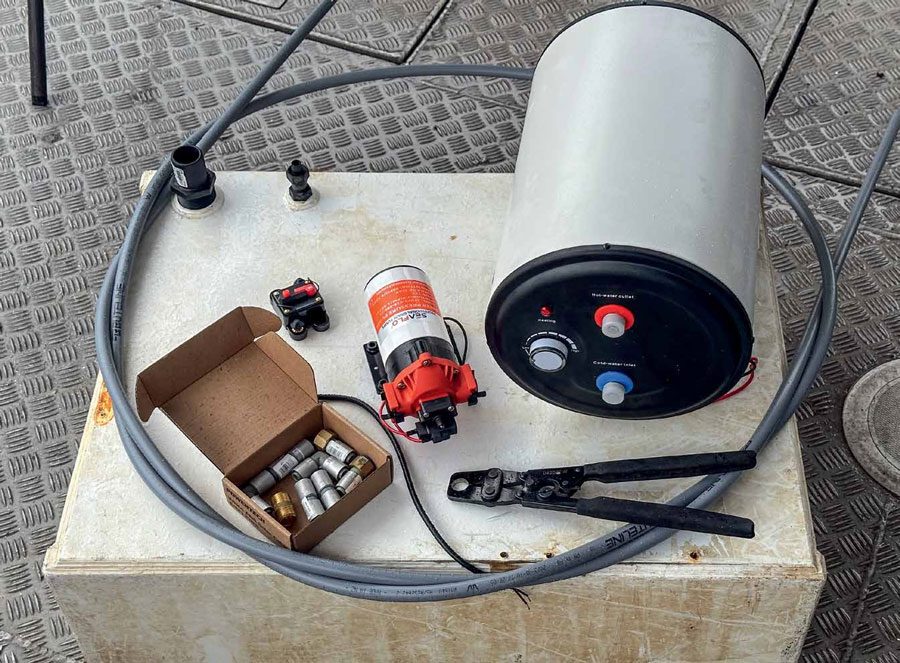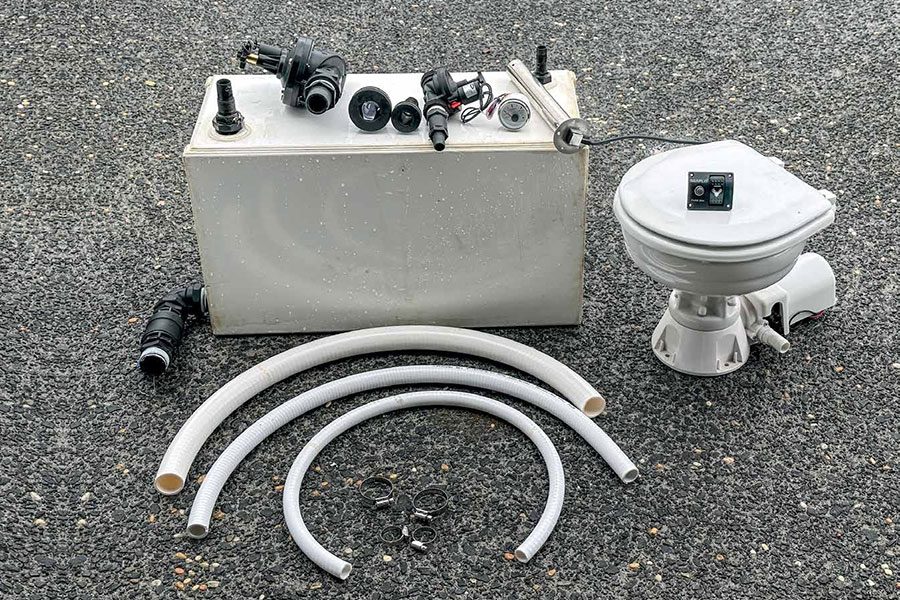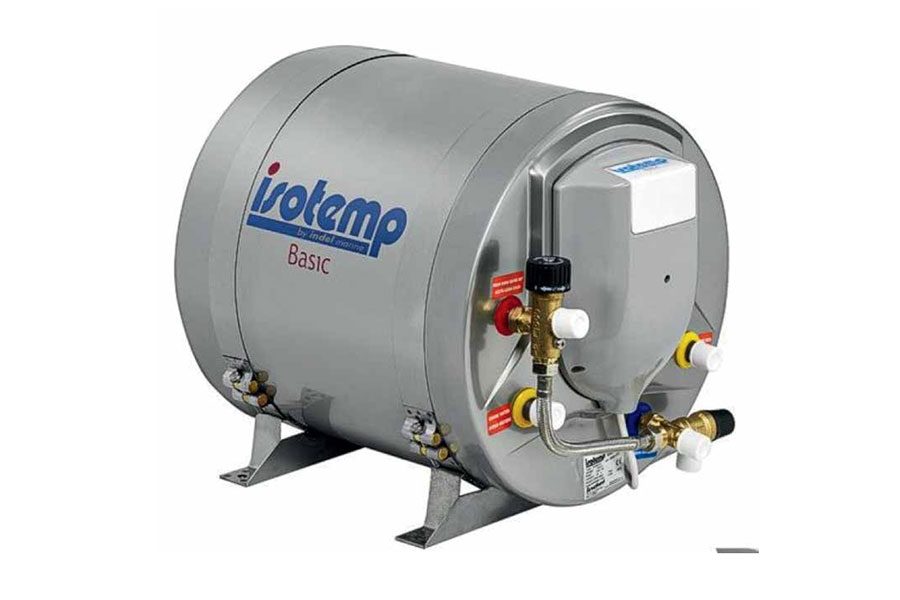

A big bronze prop for a launch or large sailboat can cost several thousand dollars. Even a new, high-performance stainless steel outboard prop leaves little change from $1000. So it’s definitely worth trying to recover the original. But be warned – it’s unlikely to be directly below the boat.

In this situation technology is your best friend. Assuming you have a chart-plotter and have been plotting your track, you’ll have a clear line indicating exactly where you have been. The prop may have come off when something changed, such as taking the engine out of gear, or putting it in reverse. Ascertain from your plotter exactly where this might have happened.
In our case, we identified our route into the bay for the scallop dive, and the point where the engines were put into reverse during anchoring. As we’d drifted back prior to the anchor biting, this was some 50m from our current position.
WHY DID MY PROP COME OFF?
The three most common prop-locking mechanisms are:
CASTELLATED NUT: Looking like the ramparts of a castle, these nuts have slots for a cotter pin to be pushed through a hole in the prop shaft. The pin is then bent to prevent it falling out, and it prevents the nut from coming loose. Although this is by far the most popular prop securing method, it’s not particularly reliable as only a cotter pin prevents the nut from coming loose.

LOCKING NUTS: This arrangement uses two nuts of identical thread size, but one twice as thick as the other. The thinner nut is the ‘jamming’ nut and always screwed on first, tightened to the specified torque. Then the thicker nut is fitted and tightened with considerably more force up against the thinner one.
This causes the nuts to lock tight against each other with the bigger, outside nut taking most of the load. Usually, an additional cotter pin is installed in the driveshaft outside the second nut. This is arguably the most secure locking method as two separate mechanisms prevent loss.
TABBED WASHER AND SINGLE NUT: Either a nyloc or castellated nut, this is the most common mechanism used on outboards, where a tabbed washer is fitted between the prop and the nut.
Various types exist, but they all have some way to stop the washer turning on the shaft – either an internal protrusion that fits into the keyway on the shaft, or cut-outs to match the splines on the shaft.
The nut is tightened hard up against the washer, after which the tabs on the outside of the washer are bent, either tight against the nut sides or against the castellated part of the nut.
Since the washer cannot rotate due to the splines, and the bent tabs prevent the nut from rotating, the prop cannot come off. If a nyloc nut is used then there are two mechanisms to stop the nut unscrewing, but if a castellated nut is used then an additional cotter pin is recommended.
Both the cotter pins and tabbed washers are designed to be used once – when removing and replacing the prop for maintenance, replace these with a new one to prevent them failing due to metal fatigue.

Even if you aren’t able to use chart tracking to identify the exact location, a high-resolution side-scanning sonar, like the newest Active Imaging units from Lowrance, can resolve even small objects like a propeller with remarkable clarity provided the water isn’t too deep.
Of course, this won’t help if you have a single-engine boat, so put a call out on the VHF and see if anyone nearby can help.
Having located the missing prop, we fortunately had a number of experienced divers on board who went into full recovery mode, and with the prop back on board we considered our options. Given the prop weighs about 20kg, re-fitting it in situ wasn’t realistic, even if a replacement nut and locking washer were available.
USING SIDESCANNING SONAR TO FIND YOUR PROP
A conventional fish finder is useless for locating a static item like a propeller on the bottom. The single sonar beam will simply show the bottom as being fractionally shallower as you go over an object.
What you need is technology providing a 3D image – a forward-scanning or side-scanning solution – which delivers detailed, high-resolution images capable of showing an outboard prop sticking up out of the sand.
Side-scanning technology works because the ping goes out to either side of the boat. As the echo from an object is detected so too is the ‘shadow’ behind it, which when displayed on the screen will readily show the object’s shape. The distinctive blades of a prop will show up, unless it fell into an area that cannot be seen – such as a crack between boulders or other bottom debris.

For most outboards and sternleg installations though, the leg/motor can be turned to full lock before being tilted up, enabling access to the prop shaft. The shear pin can be replaced, if that is the issue, or the prop and retaining nut replaced if you have a spare nut on board.
Tip: If you ever replace your prop, keeping the old one on board is not a bad idea, with a spare nut and shear pin, as an emergency back-up.
In our case we motored slowly home on one engine, after calling Coastguard and reporting our situation. If you have a single engine and no way of replacing the missing unit or repairing a sheared pin, a Coastguard tow is probably your best option.
MAYBE IT’S NOT A MISSING PROP?
If your boat doesn’t respond to a bit of throttle, don’t assume the prop’s missing. Similar symptoms can be caused by a cable linkage problem, a broken shear pin, a ‘stripped’ key in the prop/shaft, a sheared flexible coupling or even a gearbox failure.
Isolating the problem is easy: open the engine cover, start the engine and have someone put the engine into gear while observing the engine and drive mechanism.
Assuming all is in order, you’ll need to check the prop. An outboard or sternleg can be tilted up, but with any sort of shaft drive you’ll have to jump into the water to physically check out the prop.
If the prop’s still on the shaft but not turning when the engine is in gear (or only turning slowly) the problem is likely the shear pin or key (the piece that sits in a slot between the shaft and prop hub).
With outboards, it’s possible that the rubber hub inside the prop is damaged (it’s designed to protect the engine and gearbox if you hit something solid). In either of these cases removing the prop and replacing the sheared item is a relatively easy fix.




